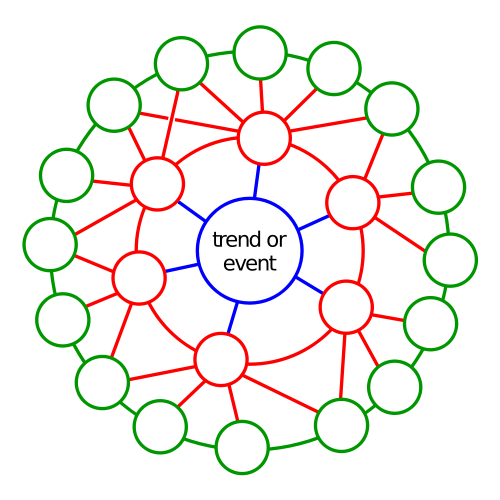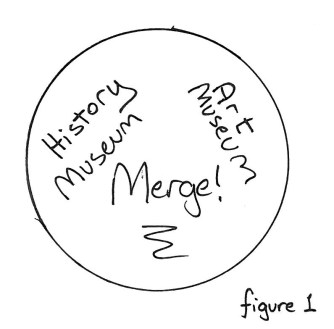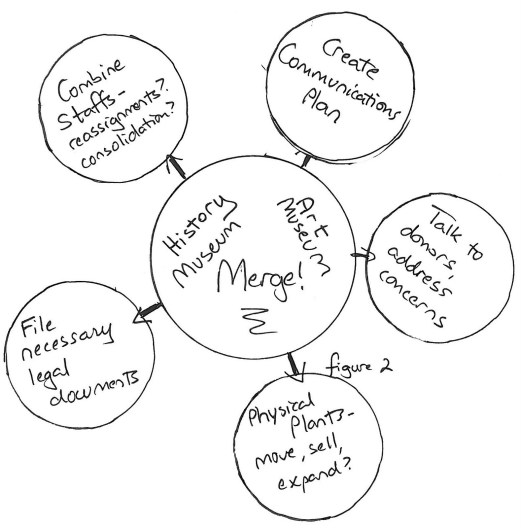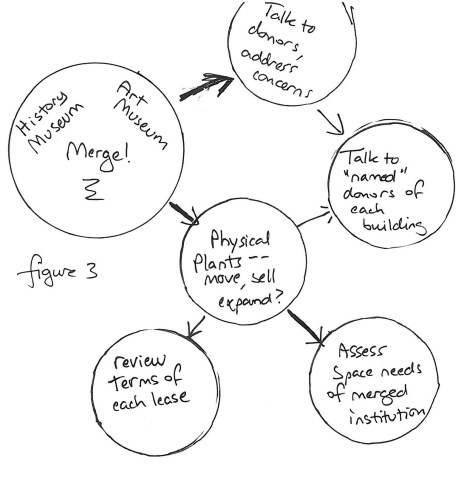
What would happen if a space craft full of weak, disoriented insectoid aliens parked itself in orbit over South Africa?
The implications of that (highly) improbable event are explored the 2009 film District 9. The director posits humans would confine the aliens to a ghetto outside Johannesburg, scornfully dub them “prawns”, and exploit them for military research. This plot, as with so much good science fiction, explores our actual history and culture, but it applies a useful forecasting technique—looking at a trend or event, thinking about the implications, and seeing where in the cone of plausibility those ripple effects might take us.
So maybe aliens aren’t going to park above your museum. Pick something more plausible that may profoundly affect your current plans. For example:
- Your community is aging: within 10 years, 60% of the population will be over the age of 65, and fewer than 20% of families will have school age children.
- Your local government decides to implement Payment in Lieu of Taxes, and slaps you with a bill for city services equal to 5% of your current annual operating expenses.
- Your museum decides to merge with another organization in your community.
How do you begin to get a handle on all the ways in which these changes (good or bad) will affect your organization? How do you begin to plan your response?
One very useful tool is the Implication Wheel—a method of visual mapping that leads staff, board members and other stakeholders through a process of wrapping their brains around a change, and planning effective responses.
Start by putting your trend or event at the middle of your wheel.
Then ask yourself:
- What is likely to happen next?
- How would my (our) life change?
- What would we need to decide?
So, for the merger, you might add:
Then, choosing one item from this first circle of implications, ask the same questions and build out from there.
Push participants to explore implications of the central event in all the “STEEP” categories—social (cultural), technological, economic, ecological, political. And consider both small and large frames of reference. Social/cultural implications might be institutional (staff with very different backgrounds and training have to learn to work together) or local (the distinct communities that used the two museums need to get comfortable with each other). Same for political implications—you need a communications plan both internally (for staff and volunteers) and externally (for members, funders, community stakeholders). Implications wheels are great for a number of reasons:
- They are accessible. People who don’t feel comfortable writing memos or position papers usually feel ok contributing a thought on a sticky note and putting it on the wheel.
- It feels messy and provisional, which can encourage people to free associate. Sometimes this is the best way to flush out touchy topics or fringe possibilities. (To foster this approach, I recommend drawing freehand on a white board or flip chart, and/or using sticky notes.)
- It has high visual impact, and illustrates the decision making process in a way that easy to share with other stakeholders. (If you want to create an electronic document to share, you can use mind mapping or flowchart software to transcribe the wheel.)
- The method tends to do a very good job spotting major negative implication of a decision or event, and identifying opportunities.
You can find a brief introduction to Implications Wheels here, and a longer exploration showing how it was used to model the implications of pandemic flu here.
If you have done an Implications Wheel for a decision or event facing your museum, I would love to see it. Are you willing to share? Please do!
[inset-related-content]











